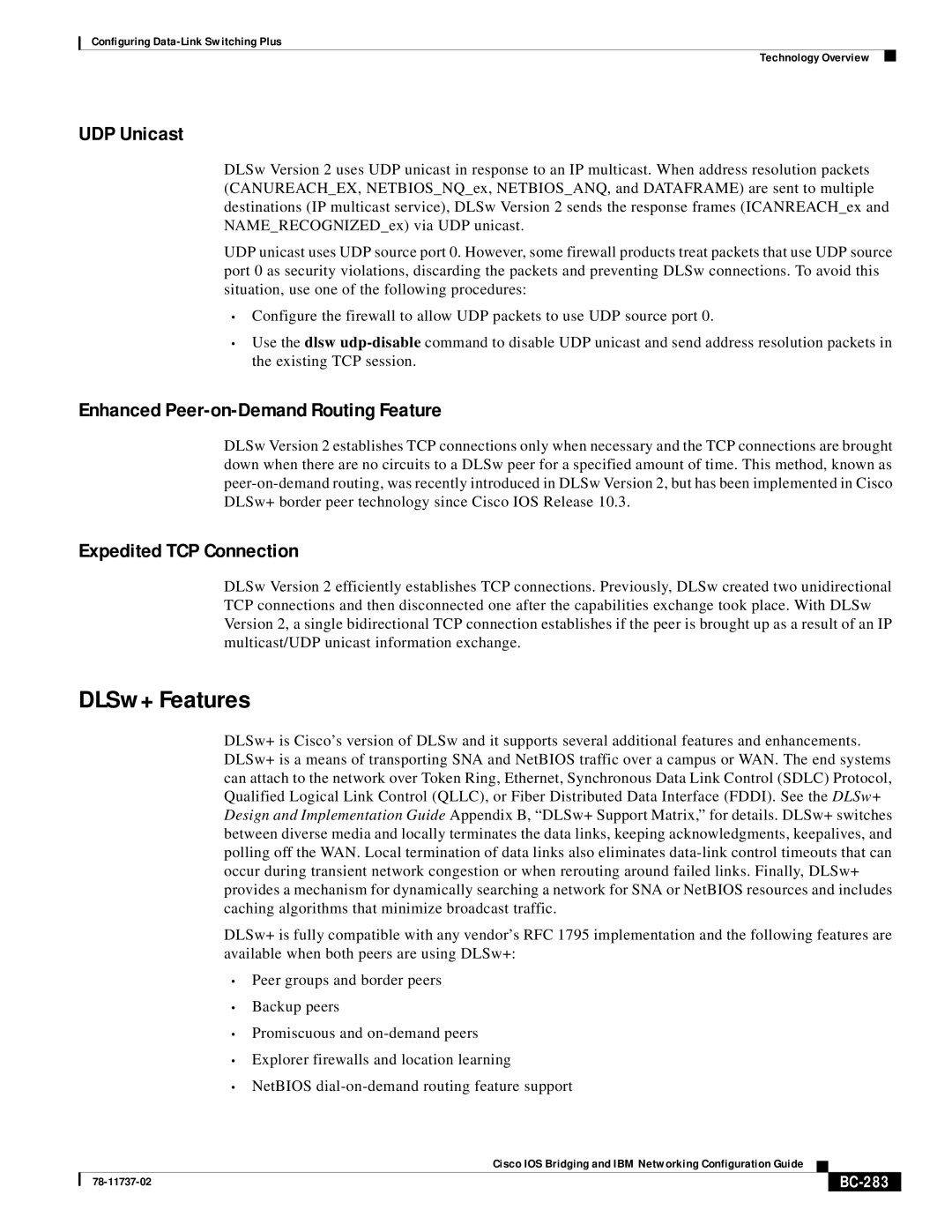Configuring
Technology Overview
UDP Unicast
DLSw Version 2 uses UDP unicast in response to an IP multicast. When address resolution packets (CANUREACH_EX, NETBIOS_NQ_ex, NETBIOS_ANQ, and DATAFRAME) are sent to multiple destinations (IP multicast service), DLSw Version 2 sends the response frames (ICANREACH_ex and NAME_RECOGNIZED_ex) via UDP unicast.
UDP unicast uses UDP source port 0. However, some firewall products treat packets that use UDP source port 0 as security violations, discarding the packets and preventing DLSw connections. To avoid this situation, use one of the following procedures:
•Configure the firewall to allow UDP packets to use UDP source port 0.
•Use the dlsw
Enhanced Peer-on-Demand Routing Feature
DLSw Version 2 establishes TCP connections only when necessary and the TCP connections are brought down when there are no circuits to a DLSw peer for a specified amount of time. This method, known as
Expedited TCP Connection
DLSw Version 2 efficiently establishes TCP connections. Previously, DLSw created two unidirectional TCP connections and then disconnected one after the capabilities exchange took place. With DLSw Version 2, a single bidirectional TCP connection establishes if the peer is brought up as a result of an IP multicast/UDP unicast information exchange.
DLSw+ Features
DLSw+ is Cisco’s version of DLSw and it supports several additional features and enhancements. DLSw+ is a means of transporting SNA and NetBIOS traffic over a campus or WAN. The end systems can attach to the network over Token Ring, Ethernet, Synchronous Data Link Control (SDLC) Protocol, Qualified Logical Link Control (QLLC), or Fiber Distributed Data Interface (FDDI). See the DLSw+ Design and Implementation Guide Appendix B, “DLSw+ Support Matrix,” for details. DLSw+ switches between diverse media and locally terminates the data links, keeping acknowledgments, keepalives, and polling off the WAN. Local termination of data links also eliminates
DLSw+ is fully compatible with any vendor’s RFC 1795 implementation and the following features are available when both peers are using DLSw+:
•Peer groups and border peers
•Backup peers
•Promiscuous and
•Explorer firewalls and location learning
•NetBIOS
|
| Cisco IOS Bridging and IBM Networking Configuration Guide |
|
|
|
|
|
| |||
|
|
|
|
| |
|
|
|
|
